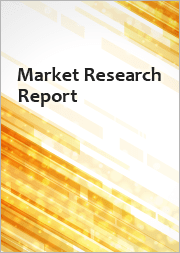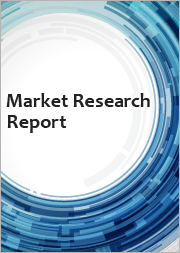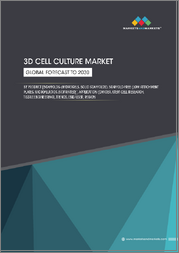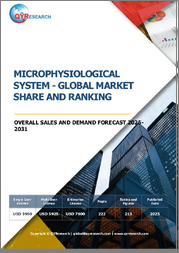
|
시장보고서
상품코드
1423682
세포배양 레더 시장 예측(-2030년) : 기술별, 용도별, 지역별 세계 분석Cell-Cultured Leather Market Forecasts to 2030 - Global Analysis By Technology (Collagen-based, Mycelium-based and Other Technologies), By Application (Apparel, Automotive, Footwear and Other Applications) and By Geography |
||||||
Stratistics MRC에 따르면 세계의 세포배양 레더 시장은 2023년에 449만 달러를 차지하고 예측 기간 중 CAGR 11.1%로 성장하며, 2030년에는 940만 달러에 달할 전망입니다.
세포 배양 가죽은 실험실 가죽 또는 바이오 패브리케이션 가죽으로도 알려져 있으며, 세포 농업 기술을 사용하여 생산됩니다. 이는 동물의 피부 발달 과정을 모방하여 통제된 실험실 환경에서 동물 세포를 배양하는 것을 포함합니다. 이 과정을 통해 콜라겐 및 기타 단백질이 성장하고 기존 가죽과 유사한 특성을 가진 재료로 조립되어 기존의 동물성 가죽을 대체할 수 있는 지속가능하고 잔인하지 않은 가죽을 제공합니다.
지속가능하고 잔인하지 않은 제품에 대한 수요 증가
지속가능성과 윤리적 관행에 대한 소비자의 인식이 높아지면서 세포 배양 가죽에 대한 수요가 증가하고 있습니다. 소비자들이 환경 친화적인 선택을 우선시하는 가운데, 가죽 산업은 환경 문제와 동물 보호 측면에서 감시의 시선을 받고 있습니다. 잔인하지 않고 지속가능한 대안을 제공하는 세포 배양 가죽은 이러한 수요에 부응합니다. 동물을 사용하지 않는 생산은 윤리적 가치에 부합하며, 책임감 있고 친환경적인 패션을 추구하는 소비자들을 끌어들입니다. 이러한 인식 증가와 지속가능하고 크루얼티 프리 제품에 대한 선호도가 시장 성장을 주도하고 있습니다.
생산 확대에 대한 과제
세포 배양 가죽 시장에서는 바이오 제조의 복잡한 특성으로 인해 생산 규모 확대가 과제입니다. 제품의 품질과 일관성을 유지하면서 대규모 생산을 달성하기 위해서는 견고하고 비용 효율적인 바이오 가공 기술이 필요합니다. 또한 효율적인 원료 공급망을 구축하고 대량 생산을 위한 규제 승인을 확보하는 것은 수요 증가에도 불구하고 시장의 빠른 확장성에 영향을 미치는 장애물이 되고 있습니다.
채식주의자 및 환경의식이 높은 소비자층의 성장
윤리적이고 지속가능한 관행에 대한 인식이 높아지면서 소비자들은 기존 가죽에 대한 대안을 찾고 있습니다. 동물 실험을 하지 않고 환경 친화적인 대안인 세포배양 가죽은 이러한 가치에 부합하는 제품입니다. 환경에 미치는 영향과 동물에 대한 피해를 최소화하는 제품에 대한 수요가 증가함에 따라 세포 배양 가죽은 매력적인 대안으로 자리매김하고 있습니다. 이러한 추세를 활용하는 것은 시장 성장과 혁신적이고 지속가능한 소재의 광범위한 채택을 위한 좋은 기회입니다.
대체 합성 피혁과의 경쟁
대체 합성피혁과의 경쟁은 세포배양 가죽 시장에 위협이 되고 있습니다. 합성 피혁은 생산 비용이 저렴하고 제조 공정이 확립되어 있습니다. 폴리우레탄 및 PVC 기반 인조 가죽과 같은 합성 소재의 발전은 소비자에게 더 저렴하고 폭넓게 이용할 수 있는 선택권을 제공함으로써 문제에 직면하고 있습니다. 또한 합성 피혁 산업의 대규모 생산 능력과 소비자들이 이러한 소재에 익숙해지면서 세포 배양 가죽의 급속한 보급을 방해하고 있습니다.
COVID-19의 영향 :
COVID-19 팬데믹은 세포배양 가죽 시장공급망과 투자 계획을 혼란에 빠뜨려 초기 후퇴를 초래했습니다. 그러나 이 위기는 지속가능하고 탄력적인 공급망의 필요성을 강조하고 친환경적인 대안에 대한 관심을 높였습니다. 윤리적 패션과 지속가능성에 대한 소비자의 인식도 팬데믹 기간 중 급상승하여 잔인하지 않은 제품에 대한 수요가 증가했습니다. 이러한 소비자 행동의 변화는 결국 시장 회복과 세포 배양 가죽의 채택을 가속화했습니다.
예측 기간 중 수하물 및 가방 분야가 가장 클 것으로 예상
지속가능하고 크루얼티프리 패션에 대한 소비자 선호도가 높아지면서, 수하물 및 가방 분야가 시장을 주도할 것으로 예상됩니다. 특히 가방 및 수하물과 같은 액세서리에서 친환경 대체품에 대한 수요가 증가함에 따라 세포배양 가죽에 대한 관심이 급증하고 있습니다. 또한 고급 브랜드와 세포배양 가죽 생산업체가 파트너십을 맺고 친환경적이고 고품질의 제품을 생산하면서 이 부문의 성장을 더욱 촉진하고 있습니다.
균사체 기반 부문은 예측 기간 중 가장 높은 CAGR을 보일 것으로 예상됩니다.
균사체 기반 부문은 지속가능하고 다재다능한 특성으로 인해 급성장할 준비가 되어 있습니다. 균사체(곰팡이의 뿌리 구조)는 세포 배양 가죽을 만들기 위한 재생한 자원으로 작용합니다. 기존 가죽의 질감과 특성을 모방할 수 있는 능력은 균사체 배양 기술의 발전과 함께 높은 잠재력을 지원하고 있습니다. 또한 친환경 대체품에 대한 관심이 높아지고 연구개발에 대한 투자가 증가함에 따라 균사체 기반 세포 배양 가죽은 선두주자로 자리매김하고 있으며, 이 부문의 CAGR이 가장 높을 것으로 예상됩니다.
가장 큰 점유율을 차지하는 지역
유럽은 지속가능성에 대한 높은 관심, 엄격한 규제, 탄탄한 기술 혁신으로 인해 가장 큰 시장 점유율을 차지할 것으로 추정됩니다. 이 지역은 윤리적이고 환경 친화적인 관행을 우선시하며, 친환경적이고 친환경적인 제품을 원하는 소비자의 요구에 부응하고 있습니다. 광범위한 정부 지원, 연구 투자, 학계와 산업계의 협력은 기술 발전에 박차를 가하고 있습니다. 또한 고급 패션 및 자동차 산업에서 대체 소재에 대한 적극적인 접근 방식은 세포 배양 가죽 시장 형성에서 유럽의 우위를 더욱 공고히 하고 있습니다.
CAGR이 가장 높은 지역 :
아시아태평양은 급속한 기술 발전과 지속가능한 패션을 선호하는 소비층이 급증하면서 시장이 크게 성장할 것으로 예상됩니다. 중국, 일본, 한국과 같은 국가들은 섬유 산업이 번창하고 친환경적인 의식으로 전환하는 가운데 혁신적인 기술에 많은 투자를 하고 있습니다. 또한 지속가능한 실천을 지원하는 협력 관계와 정부의 구상이 증가함에 따라 이 지역에서 세포 배양 가죽의 채택과 생산이 크게 확대될 가능성이 더욱 커지고 있습니다.
무료 커스터마이징 서비스
이 보고서를 구독하는 고객은 다음과 같은 무료 맞춤화 옵션 중 하나를 사용할 수 있습니다. :
- 기업 개요
- 추가 시장 기업의 종합적인 프로파일링(최대 3사)
- 주요 기업의 SWOT 분석(최대 3사)
- 지역 세분화
- 고객의 관심에 따른 주요 국가별 시장 추정치, 예측, CAGR(주: 타당성 확인에 따라 다름)
- 경쟁사 벤치마킹
- 제품 포트폴리오, 지역적 입지, 전략적 제휴를 기반으로 한 주요 기업 벤치마킹
목차
제1장 주요 요약
제2장 서문
- 개요
- 이해관계자
- 조사 범위
- 조사 방법
- 데이터 마이닝
- 데이터 분석
- 데이터 검증
- 조사 어프로치
- 조사 소스
- 1차 조사 소스
- 2차 조사 소스
- 전제조건
제3장 시장 동향 분석
- 촉진요인
- 억제요인
- 기회
- 위협
- 기술 분석
- 애플리케이션 분석
- 신흥 시장
- 신종 코로나바이러스 감염증(COVID-19)의 영향
제4장 Porter's Five Forces 분석
- 공급 기업의 교섭력
- 구매자의 교섭력
- 대체품의 위협
- 신규 진출업체의 위협
- 경쟁 기업간 경쟁 관계
제5장 세계의 세포배양 레더 시장 : 기술별
- 콜라겐 기반
- 균사체 기반
- 기타 기술
제6장 세계의 세포배양 레더 시장 : 용도별
- 의복
- 자동차
- 신발
- 러기지 & 백
- 기타 용도
제7장 세계의 세포배양 레더 시장 : 지역별
- 북미
- 미국
- 캐나다
- 멕시코
- 유럽
- 독일
- 영국
- 이탈리아
- 프랑스
- 스페인
- 기타 유럽
- 아시아태평양
- 일본
- 중국
- 인도
- 호주
- 뉴질랜드
- 한국
- 기타 아시아태평양
- 남미
- 아르헨티나
- 브라질
- 칠레
- 기타 남미
- 중동 및 아프리카
- 사우디아라비아
- 아랍에미리트
- 카타르
- 남아프리카공화국
- 기타 중동 및 아프리카
제8장 주요 발전
- 계약, 파트너십, 협업, 합병사업
- 인수합병
- 신제품의 발매
- 사업 확대
- 기타 주요 전략
제9장 기업 개요
- Biofabricate
- Biomason
- Bioworks
- Bolt Threads
- CELLINK
- Geltor
- Modern Meadow
- Mycotech
- MycoWorks
- Orbillion Bio
- TerViva
- TextileGenesis
- Tiamat Sciences
- Triton Algae Innovations
- VitroLabs
According to Stratistics MRC, the Global Cell-Cultured Leather Market is accounted for $4.49 million in 2023 and is expected to reach $9.40 million by 2030 growing at a CAGR of 11.1% during the forecast period. Cell-cultured leather, also known as lab-grown or biofabricated leather is produced using cellular agriculture techniques. It involves cultivating animal cells in a controlled lab environment, mimicking the process of animal skin development. Through this process, collagen and other proteins are grown and assembled into material with characteristics similar to traditional leather, offering a sustainable and cruelty-free alternative to conventional animal-derived leather.
Market Dynamics:
Driver:
Rising demand for sustainable and cruelty-free products
The growing consumer consciousness towards sustainability and ethical practices propels the demand for cell-cultured leather. As consumers prioritise eco-friendly choices, the leather industry faces scrutiny due to environmental concerns and animal welfare. Cell-cultured leather, offering a cruelty-free and sustainable alternative, meets this demand. Its production without animal involvement aligns with ethical values, attracting consumers seeking responsible, eco-conscious fashion. This heightened awareness and preference for sustainable, cruelty-free products drives the market's growth.
Restraint:
Challenges in scaling up production
Scaling up production poses challenges in the cell-cultured leather market due to the complex nature of biomanufacturing. Achieving large-scale production while maintaining product quality and consistency demands robust and cost-effective bioprocessing techniques. Additionally, establishing efficient supply chains for raw materials and securing regulatory approvals for mass production present hurdles, impacting the market's swift scalability despite growing demand.
Opportunity:
Growth of the vegan and eco-conscious consumer base
Owing to rising awareness of ethical and sustainable practices, consumers seek alternatives to traditional leather. Cell-cultured leather, offering a cruelty-free and eco-friendly option, aligns with these values. The growing demand for products that minimise environmental impact and animal harm positions cell-cultured leather as an attractive choice. Capitalising on this trend presents an opportune moment for market growth and wider adoption of innovative, sustainable materials.
Threat:
Competition from synthetic leather alternatives
Competition from synthetic leather alternatives poses a threat to the cell-cultured leather market. Synthetic leather offers lower production costs and established manufacturing processes. Advances in synthetic materials, such as polyurethane and PVC-based faux leather, pose a challenge by providing a cheaper and more widely available option for consumers. Additionally, the synthetic leather industry's capacity for large-scale production and the familiarity of consumers with these materials hinder the rapid adoption of cell-cultured leather.
Covid-19 Impact:
The COVID-19 pandemic disrupted supply chains and investment plans in the cell-cultured leather market, causing initial setbacks. However, the crisis underscored the need for sustainable and resilient supply chains, fueling increased interest in eco-friendly alternatives. Consumer awareness regarding ethical fashion and sustainability also surged during the pandemic, driving a heightened demand for cruelty-free products. This shift in consumer behaviour ultimately accelerated the market's recovery and adoption of cell-cultured leather.
The luggage & bags segment is expected to be the largest during the forecast period
The luggage and bags segment is anticipated to lead the market due to increasing consumer preferences for sustainable and cruelty-free fashion. As the demand for eco-friendly alternatives grows particularly in accessories like bags and luggage, there's a surge in interest in cell-cultured leather. Additionally, partnerships between luxury brands and cell-cultured leather producers to create high-quality environmentally conscious products further drive the segment's growth.
The mycelium-based segment is expected to have the highest CAGR during the forecast period
The mycelium-based segment is poised for rapid growth due to its sustainable and versatile nature. Mycelium, the root structure of fungi, serves as a renewable resource for creating cell-cultured leather. Its ability to mimic the texture and properties of traditional leather, coupled with advancements in mycelium cultivation techniques, drives its high potential. In addition, growing interest in eco-friendly alternatives, coupled with investments in research and development, positions mycelium-based cell-cultured leather as a frontrunner, projecting the segment's highest CAGR.
Region with largest share:
The European region is estimated to witness the largest market share owing to its strong focus on sustainability, stringent regulations and robust innovation. The region prioritises ethical and environmentally friendly practices, aligning with consumer demands for cruelty-free and eco-conscious products. Extensive government support, research investments and collaborations between academia and industry fuel technological advancements. Moreover, a proactive approach towards alternative materials in the luxury fashion and automotive industries further cements Europe's dominance in shaping the cell-cultured leather market.
Region with highest CAGR:
The Asia Pacific region is primed for substantial growth in the market due to burgeoning technological advancements and a burgeoning consumer base inclined towards sustainable fashion. With a thriving textile industry and a shift towards eco-consciousness, countries like China, Japan and South Korea are investing heavily in innovative technologies. Additionally, increasing collaborations and government initiatives supporting sustainable practices further bolster the region's potential for significant expansion in cell-cultured leather adoption and production.
Key players in the market
Some of the key players in Cell-Cultured Leather Market include Biofabricate, Biomason, Bioworks, Bolt Threads, CELLINK, Geltor, Modern Meadow, Mycotech, MycoWorks, Orbillion Bio, TerViva, TextileGenesis, Tiamat Sciences, Triton Algae Innovations and VitroLabs.
Key Developments:
In July 2023, Modern Meadow raised Series D funding. The funding is led by Astanor Ventures, Horizons Ventures, and Key Partners Capital, which will support Modern Meadow to continue its innovation.
In May 2022, VitroLabs Inc raised US$ 46 million to build and scale the world's first pilot production of cell-cultivated leather. The Series A funding is led by Agronomics; other investors include BESTSELLER's Invest FWD, global luxury group Kering, Khosla Ventures, actor and environmentalist Leonardo DiCaprio, New Agrarian, and Regeneration.VC. Moreover, Kering continues its partnership with VitroLabs Inc in bringing support for product quality testing, tanning, and finishing.
Technologies Covered:
- Collagen-based
- Mycelium-based
- Other Technologies
Applications Covered:
- Apparel
- Automotive
- Footwear
- Luggage & Bags
- Other Applications
Regions Covered:
- North America
- US
- Canada
- Mexico
- Europe
- Germany
- UK
- Italy
- France
- Spain
- Rest of Europe
- Asia Pacific
- Japan
- China
- India
- Australia
- New Zealand
- South Korea
- Rest of Asia Pacific
- South America
- Argentina
- Brazil
- Chile
- Rest of South America
- Middle East & Africa
- Saudi Arabia
- UAE
- Qatar
- South Africa
- Rest of Middle East & Africa
What our report offers:
- Market share assessments for the regional and country-level segments
- Strategic recommendations for the new entrants
- Covers Market data for the years 2021, 2022, 2023, 2026, and 2030
- Market Trends (Drivers, Constraints, Opportunities, Threats, Challenges, Investment Opportunities, and recommendations)
- Strategic recommendations in key business segments based on the market estimations
- Competitive landscaping mapping the key common trends
- Company profiling with detailed strategies, financials, and recent developments
- Supply chain trends mapping the latest technological advancements
Free Customization Offerings:
All the customers of this report will be entitled to receive one of the following free customization options:
- Company Profiling
- Comprehensive profiling of additional market players (up to 3)
- SWOT Analysis of key players (up to 3)
- Regional Segmentation
- Market estimations, Forecasts and CAGR of any prominent country as per the client's interest (Note: Depends on feasibility check)
- Competitive Benchmarking
- Benchmarking of key players based on product portfolio, geographical presence, and strategic alliances
Table of Contents
1 Executive Summary
2 Preface
- 2.1 Abstract
- 2.2 Stake Holders
- 2.3 Research Scope
- 2.4 Research Methodology
- 2.4.1 Data Mining
- 2.4.2 Data Analysis
- 2.4.3 Data Validation
- 2.4.4 Research Approach
- 2.5 Research Sources
- 2.5.1 Primary Research Sources
- 2.5.2 Secondary Research Sources
- 2.5.3 Assumptions
3 Market Trend Analysis
- 3.1 Introduction
- 3.2 Drivers
- 3.3 Restraints
- 3.4 Opportunities
- 3.5 Threats
- 3.6 Technology Analysis
- 3.7 Application Analysis
- 3.8 Emerging Markets
- 3.9 Impact of Covid-19
4 Porters Five Force Analysis
- 4.1 Bargaining power of suppliers
- 4.2 Bargaining power of buyers
- 4.3 Threat of substitutes
- 4.4 Threat of new entrants
- 4.5 Competitive rivalry
5 Global Cell-Cultured Leather Market, By Technology
- 5.1 Introduction
- 5.2 Collagen-based
- 5.3 Mycelium-based
- 5.4 Other Technologies
6 Global Cell-Cultured Leather Market, By Application
- 6.1 Introduction
- 6.2 Apparel
- 6.3 Automotive
- 6.4 Footwear
- 6.5 Luggage & Bags
- 6.6 Other Applications
7 Global Cell-Cultured Leather Market, By Geography
- 7.1 Introduction
- 7.2 North America
- 7.2.1 US
- 7.2.2 Canada
- 7.2.3 Mexico
- 7.3 Europe
- 7.3.1 Germany
- 7.3.2 UK
- 7.3.3 Italy
- 7.3.4 France
- 7.3.5 Spain
- 7.3.6 Rest of Europe
- 7.4 Asia Pacific
- 7.4.1 Japan
- 7.4.2 China
- 7.4.3 India
- 7.4.4 Australia
- 7.4.5 New Zealand
- 7.4.6 South Korea
- 7.4.7 Rest of Asia Pacific
- 7.5 South America
- 7.5.1 Argentina
- 7.5.2 Brazil
- 7.5.3 Chile
- 7.5.4 Rest of South America
- 7.6 Middle East & Africa
- 7.6.1 Saudi Arabia
- 7.6.2 UAE
- 7.6.3 Qatar
- 7.6.4 South Africa
- 7.6.5 Rest of Middle East & Africa
8 Key Developments
- 8.1 Agreements, Partnerships, Collaborations and Joint Ventures
- 8.2 Acquisitions & Mergers
- 8.3 New Product Launch
- 8.4 Expansions
- 8.5 Other Key Strategies
9 Company Profiling
- 9.1 Biofabricate
- 9.2 Biomason
- 9.3 Bioworks
- 9.4 Bolt Threads
- 9.5 CELLINK
- 9.6 Geltor
- 9.7 Modern Meadow
- 9.8 Mycotech
- 9.9 MycoWorks
- 9.10 Orbillion Bio
- 9.11 TerViva
- 9.12 TextileGenesis
- 9.13 Tiamat Sciences
- 9.14 Triton Algae Innovations
- 9.15 VitroLabs



















